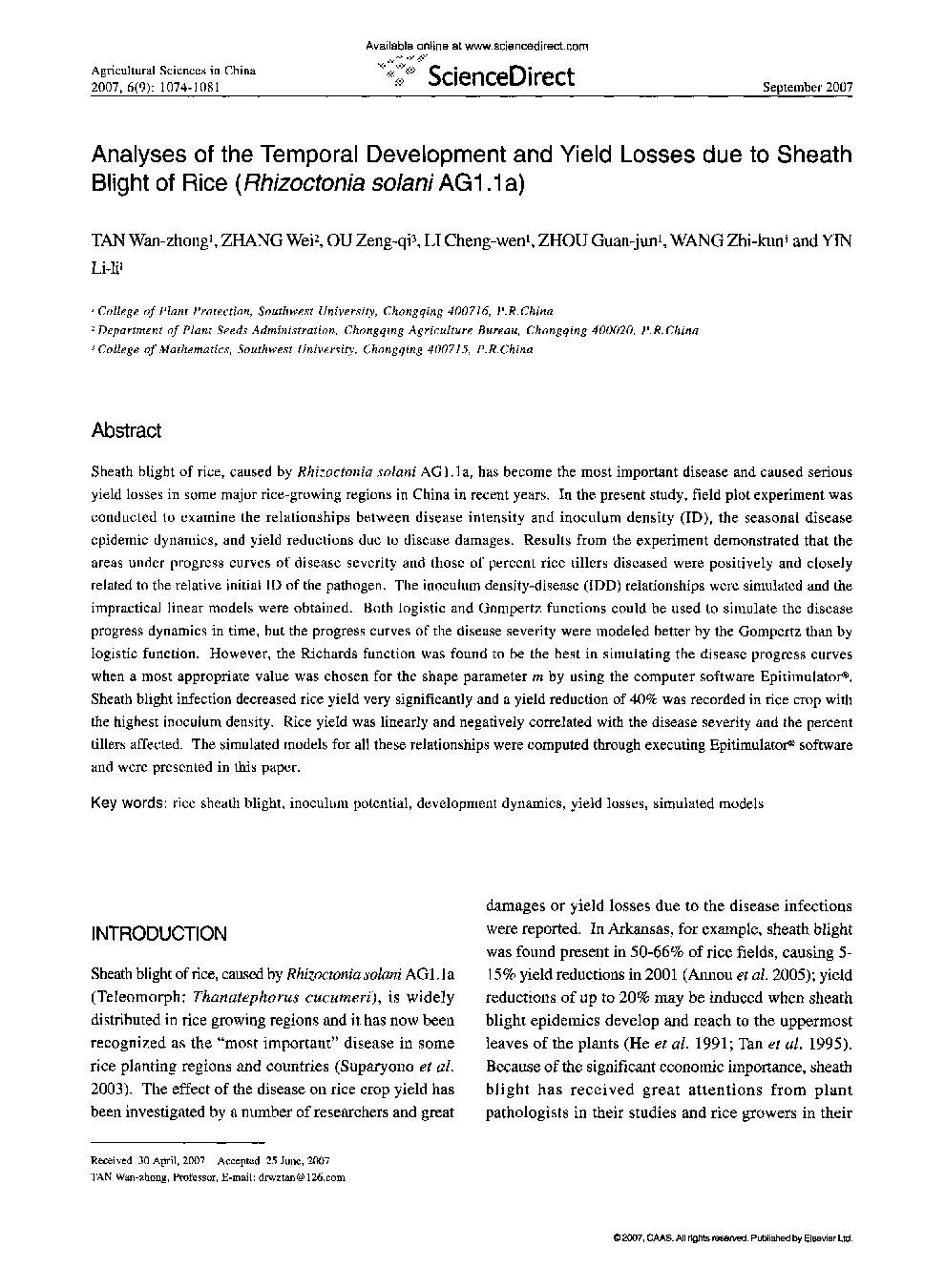| Article ID | Journal | Published Year | Pages | File Type |
|---|---|---|---|---|
| 4490758 | Agricultural Sciences in China | 2007 | 8 Pages |
Sheath blight of rice, caused by Rhizoctonia solani AG1.1a, has become the most important disease and caused serious yield losses in some major rice-growing regions in China in recent years. In the present study, field plot experiment was conducted to examine the relationships between disease intensity and inoculum density (ID), the seasonal disease epidemic dynamics, and yield reductions due to disease damages. Results from the experiment demonstrated that the areas under progress curves of disease severity and those of percent rice tillers diseased were positively and closely related to the relative initial ID of the pathogen. The inoculum density-disease (IDD) relationships were simulated and the impractical linear models were obtained. Both logistic and Gompertz functions could be used to simulate the disease progress dynamics in time, but the progress curves of the disease severity were modeled better by the Gompertz than by logistic function. However, the Richards function was found to be the best in simulating the disease progress curves when a most appropriate value was chosen for the shape parameter m by using the computer software Epitimulator®. Sheath blight infection decreased rice yield very significantly and a yield reduction of 40% was recorded in rice crop with the highest inoculum density. Rice yield was linearly and negatively correlated with the disease severity and the percent tillers affected. The simulated models for all these relationships were computed through executing Epitimulator® software and were presented in this paper.
